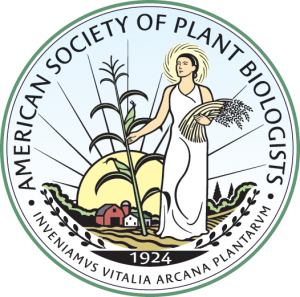Plantae Presents: Malcolm Bennett and Edith Pierre-Jerome
Plantae Presents: Malcolm Bennett and Edith Pierre-Jerome
Feb 17 – 10am EST, 3pm GMT, 4pm CET
 Malcolm Bennett: BREAKTHRU: uncovering how roots can sense and penetrate hard soils
Malcolm Bennett: BREAKTHRU: uncovering how roots can sense and penetrate hard soils
The hidden half of plant biology has been an enduring interest throughout Malcolm Bennett‘s 20-year research career as Professor of Plant Sciences at the University of Nottingham. His team and their collaborators have characterized many of the regulatory signals, genes, and mechanisms that control root growth, development, and adaptations to their soil environment. Malcolm has published over 200 root research papers and review articles and is ranked in the top 1% most highly cited animal and plant biologists. His research activities have attracted several awards including election as a member of the European Molecular Biology Organisation (EMBO; 2014) and Fellow of the Royal Society (2020).
 Edith Pierre-Jerome: A synthetic approach to parse gene regulatory logic in plant development
Edith Pierre-Jerome: A synthetic approach to parse gene regulatory logic in plant development
Edith Pierre-Jerome is currently a postdoc at Duke University. Originally from California, Edith attended UC Berkeley as an undergraduate and earned degrees in Genetics & Plant Biology, and Art History. She earned her PhD from the University of Washington reconstructing a plant signaling pathway in yeast. As a postdoc, she was awarded a fellowship from the Life Sciences Research Foundation for her research building synthetic gene circuits to regulate formative cell divisions in plants. She is currently leading the Plantae Front & Center initiative to increase the visibility of Black, Indigenous, and Latine plant scientists.
 Moderated by Dorata Kawa
Moderated by Dorata Kawa
Dorota Kawa’s main research interest is how roots function in a dynamic environment. Over the years she has explored root development and how it responds to challenges from environmental factors such as salinity, nutrient deficiencies, parasitic plants, and beneficial microbes. She studied these at multiple scales, from overall root system architecture to individual cell types and in several species: Arabidopsis, tomato, and sorghum. Currently, she is interested in the potential of microbes to reshape individual root cell types. As a postdoc in the lab of Siobhan Brady at UC Davis, she explores mechanisms by which microbes induce resistance to the parasitic weed, Striga, in sorghum roots. Dorota is an Assistant Features Editor at The Plant Cell. @dorota_kawa
Additional Q&A with Malcom Bennett
‘Soil compaction’ sounds like a very dynamic property. Did you observe a reversal in root length or ethylene levels when compacted soil is loosened up or when loose soil is compacted (if yes, in what time frame)?
That’s a very interesting question – root radial swelling responses to compacted soil have indeed been observed to be dynamic – with root radius returning to normal after it re-enters softer soil. However, the link between ethylene and root growth has not been explored….yet!
Very interesting! I guess that soil compaction will also influence soil microbes interacting with root development? The other way around, perhaps “rich” diversity/various soil microbes will help for a better soil structure allowing, in turn, better root growth? In the field, can you really “split” the “physical” (abiotic) soil interaction from all the biotic interactions?
An excellent point – the soil microbiome undoubtedly plays a role in regulating plant ethylene signalling (just like the soil’s physical environment). Indeed, there is clear evidence that many soil bacteria produce the enzyme ACC deaminase which targets the key ethylene precursor ACC and can impact root growth.
Very interesting talk! In addition to cortical cell expansion, do you also see a change in the number of cortical cells (additional cell layers?) as a result of soil compaction?
We spent a lot of time quantifying numbers of cortical cell layers (and cell dimensions) in cross-sections of roots isolated from compacted soil – we concluded that the increase in root radius was primarily driven by radial expansion of cortical cells – with additional layers playing a very minor role. Mechanistically this makes a lot of sense as changes in radial cell expansion can occur rapidly in elongation zones of roots encountering compacted soil – whereas numbers of cortical layers would have to be laid down in the meristem which would take a lot longer time t feed through into the elongation zone.
Thanks for the great talk! If you grow multiple rice plants in non-compacted soil, would you mimic the compacted soil effect? I wonder if the increase of diffused ethylene caused by higher plant density in the soil can affect root radial growth. And, on the same line, do you think plants can distinguish between self and non-self ethylene?
That’s a very interesting question – all our experiments so far have examined individual plants. However, we plan to address your question very soon using a software our computer science colleagues have developed that enables us to segment multiple plant roots growing using non-invasive CT imaging.
In ein2 mutant roots that grow just fine through compacted soils, do you see a tradeoff in growth anywhere else in the plant? (i.e. reduced shoot growth, less lateral root growth)?
We report In our new paper that root AND shoot tissues in ein2 (and other ethylene mutants in both rice and Arabidopsis) are able to largely maintain their growth,- in contrast to wild-type plants which suffer large reductions
Do the ethylene insensitive mutants have an agronomic negative for use in cropping systems?
Blocking ethylene responses in every tissue within a crop is likely to be detrimental, given the importance of this signal to key processes such as plant defense. These negatives could be circumvented by a more targetted approach where ethylene response was disrupted in just key tissues mediating root companion (i.e. elongation zones).
Do you think soil compaction response is mediated solely by Ethylene or do you foresee any other hormone component to be involved?
Ethylene appears to be the primary signal used by roots to sense soil compaction for the reasons I discussed in my lecture. We have recently identified different classes of hormone signals that act downstream of ethylene which promote root cell radial expansion and inhibition of cell elongation.
Why is the ‘natural’ ethylene response the adaptive response to root growth?
We have demonstrated that ethylene plays a key role during the root compaction ‘adaptive’ response – however, other hormone signals play roles during other root adaptive responses such as auxin and ABA during hydropatterning and xerobranching.
To Malcolm: Is there any evidence that the microbiomes in the rhizosphere differ between soils of different densities? What do you think about the possibility of microbially produced ethylene (rather than plant-sourced ethylene) contributing to the differential root phenotypic responses in soils of different compactness?
It’s a fascinating question that we are currently addressing with my colleague and microbiome expert, Gabriel Castrillo. In terms of whether soil microbes produce ethylene, it is entirely possible. However, most microbes want plants to grow and by doing so exude carbon into the soil – so inhibiting their growth by producing ethylene would be counter-productive – indeed we see that many soil bacteria produce the enzyme ACC deaminase which targets the key ethylene precursor ACC and can impact root growth.
How is this response adaptive? Seems maladaptive at first glance.
From an agronomic perspective, having crop roots produce a STOP signal like ethylene in response to soil compaction is not a great strategy. However, for wild plants growing in native, highly heterogeneous soils, using a STOP signal to redirect resources away from root growing in compacted soil to roots growing in less compacted soil makes a great deal of sense.
The response is different from hypoxia, but are there interactions between ethylene and hypoxia responses, as I guess, the oxygen concentration is also affected in compacted soils? Thank you in advance.
There is clear evidence of an interaction between hypoxia and ethylene signalling – as elegantly shown by our co-authors Rens and Sjon recently in a very nice Nature Comms paper. However, under compaction conditions in roots grown in soil, we did not see the activation of several hypoxia markers tested (but these could be induced when the soil was waterlogged, i.e. hyppoxic)
Hi! I’d like to ask if there has been an evaluation of the role or effect that microorganisms on soil can have on this ethylene accumulation. Thank you!
The soil microbiome undoubtedly plays a role in regulating plant ethylene signalling (just like the soil’s physical environment). Indeed, there is clear evidence that many soil bacteria produce the enzyme ACC deaminase which targets the key ethylene precursor ACC and can impact root growth.
Reduced gas diffusion causes the accumulation both in submerged and compacted soil conditions. How do you explain that then only in submergence does this lead to a hypoxic response? Can this be attributed to extremely high sensitivity of roots to ethylene?
We reason that the biophysical and diffusive properties of ethylene have led it to be selected as a key rhizosphere signal for ‘sensing’ compaction as the degree it accumulates around roots is able to mirror degrees that interconnected air spaces are impacted by soil compaction. In contrast, oxygen is a far smaller molecule whose diffusive properties are unlikely to be impacted by the reduction in gas diffusion triggered by soil compaction.
Do you have a vision of how to alter/select for roots that are ethylene insensitive, but still have normal ethylene response in aerial tissues where ethylene is needed for fruit ripening and other responses?
As your question hints, blocking ethylene responses in every tissue within a crop is likely to be detrimental, given the importance of this signal to key processes such as plant defense. These negatives could be circumvented by a more targetted approach where ethylene response was disrupted in just key tissues mediating root compation (i.e. elongation zones). using GM approaches, for example.
Thanks for the lovely presentation, Has there been any works looking at root microbiome involved in ethylene biodegradability?
The soil microbiome undoubtedly plays a role in regulating plant ethylene signalling (just like the soil’s physical environment). Indeed, there is clear evidence that many soil bacteria produce the enzyme ACC deaminase which targets the key ethylene precursor ACC and can impact root growth.
Would you think this process evolved or is merely a consequence of the inability of plants to get rid of ethylene from the surrounding environment?
I anticipate that this mechanism was selected during early land plant evolution to enable plant roots to penetrate soil. We are currently testing this idea in early land plants.
Great talk, thanks, do fungal root endosymbionts that improve root system architecture interfere with the described ethylene signalling cascade?
That’s a great question – ethylene plays an important role during several symbiotic root-microbe interactions (e.g. mycorrhizae and rhizobium based) so blocking ethylene responses in these tissues in the root differentiation zone would presumably be detrimental – hence the needs for a more targetted approach to disrupting root ethylene responses in just the key elongation zone tissues
I assume the soils used in the lab experiments were sterilized, correct? To exclude the possibility that restriction of ethylene diffusion in compacted soil is due to microbiota activity.
All soils used were non-sterile to ensure our results were as close to the real-world situation as possible. We cannot rule out whether soil microbes could play a role in restricting ethylene around the root, In addition to changes in soil pore space and interconnectivity.
May I know how I can know the effect of soil-born plant pathogens on plant roots?
There are many soil pathogens that predate roots! I strongly encourage you to study plant defense reporters genes expressed in roots to study the effect of pathogens (as we did with ethylene and compaction)
Thank you very much for this wonderful talk Malcolm. I wanted to know if you did a test to see the interaction of auxin and ethylene in roots?
We recently discovered that hormones such as auxin act downstream of ethylene during compaction to help coordinate root growth responses
Malcolm, does this et promote auxin signaling to grow roots faster? What happens in Osaux1 mutant in compact soil?
We have observed that the aux1 mutant is compaction resistant, consistent with its ethylene-resistant root phenotype.
What a nice story!! Do plants in compact soil develop more lateral roots?
That’s a great question – yes, we observe roots start to branch a lot when unable to penetrate into the next compacted soil layer, presumably as a compensatory mechanism
Nice talk. Are the responses all or nothing with regard to the ethylene response? Soils are heterogenic, so how much compaction would you think is required to induce the ethylene response?
Our soil model simulations suggest that ethylene diffusion through soil stops between 1.5 and 1.6 BD dependent, which is consistent with our own experimental observations in rice.
Wonderful talk. Does compacted soil inhibit the circumnutation at the root tip?
That’s a fascinating question – root circumnutation (which is linked with thigmotropism) appears to be regulated by hormone signals auxin and ethylene, so you would therefore imagine that soil compaction would impact root circumnutation. But this needs to be tested and validated in soil.
I would like to ask about cell wall modifications in response to soil compaction and ethylene. Ethylene usually reinforces the cell wall for mechanical hindrance. So the ein2 mutant data is a bit counterintuitive – Anirban, WUR, NL
That’s a great question Anirban – yes (based on unpublished data) ethylene does appear to modify cell wall properties during compaction to facilitate root cortical radial cell expansion and repress epidermal cell elongation. Remember that these changes are designed to create a swollen root tip less able to penetrate soil – in contrast, the ein2 root remains narrow and is therefore able to penetrate compacted soil more easily
Thank you very much for the excellent talk. I would like to know whether you already have or are going to study the effect of ehtylene accumulation on the regulation of lateral roots emergence and aerenchyma formation in the compacted area.
We have observed from CT scans that compaction triggers a lot of branching at the interface between softer and harder soil. How compaction interacts with aerenchyma formation is unclear. However, these processes involve root cells at different stages of root development – i.e. compaction and LR initiation involves root cells in the basal meristem/elongation zone, whereas aerenchyma formation takes place in mature root cells.
Is there any open-source fast root system reconstruction tools
I recommend the OpenSimRoot open-source root modeling platform developed by Johannes Postma, Jonathan Lynch, and co-workers.
Is this mechanism conserved in other plants beyond rice and arabidopsis?
We are currently testing your fascinating question – in early land plants and also other higher plant species like a tomato.
Do we know if plants found an evolutive advantage in the root growth inhibition as a reaction for compact soil?
For plants growing in native, highly heterogeneous soils, using a STOP signal to redirect resources away from roots growing in compacted soil to roots growing in less compacted soil makes a great deal of sense and a competitive advantage evolutionary one would imagine.
What is the role of diverse mechanosensing ion channels (mca1, piezo) in the ethylene sensing model? Is it possible to create insensitive ethylene roots without affecting others processes like the plant development aboveground?
That’s a very interesting question which we are currently exploring using mutants in these and other mechanosignalling components. However, it is clear that the root ethylene response we observe during soil compaction is not dependent on the mechanosignalling machinery, but on restricted gas diffusion. We anticipate that they could play a tole downstream of ethylene signalling
This webinar is freely available thanks to the support of the American Society of Plant Biologists. Join today.





Leave a Reply
Want to join the discussion?Feel free to contribute!